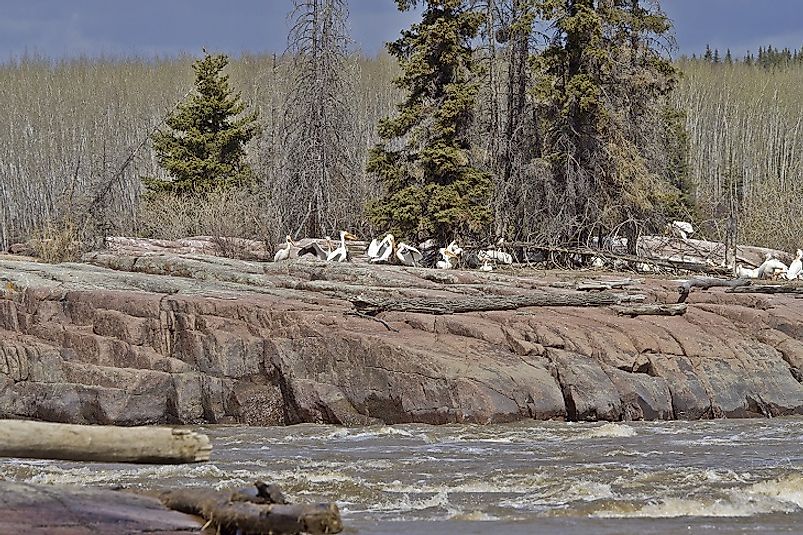The Slave River

5. Description
The Slave River is a Canadian River which arises from the confluence of the Peace River and Rivière des Rochers in northern Alberta, and flows through a distance of 415 kilometers across northwestern Alberta before finally emptying into the Great Slave Lake in the Northwest Territories. The river also forms the eastern boundary of the Wood Buffalo National Park. The Slave River is famous for its 25-kilometer-long stretch that is characterized by four sets of rapids. Namely, these are the Rapids of the Drowned, the Pelican, the Mountain, and the Cassette. Together, these rapids contribute to this area being considered one of the best whitewater kayaking destinations in the world.
4. Historical Role
The name of the Slave River has been derived from the name of the First Nations aboriginal population, the Slavey people, who settled in the Great Slave Lake region. Besides the Slaveys, the native Cree, Beaver, and Chipewyan peoples also lived in territories along the course of the Slave River before the arrival of the Europeans. A significant deal of history is associated with the Slave River and the rapids. One of the most famous one of these certainly has to be the ill-fated story of Cuthbert Grant’s expedition to the rapids in 1786, which in which the rapids killed five men from Grant’s group who were unable to navigate their way through the deadly stretches of turbulent water. The region of the rapids involved in the accident was then named the Rapids of the Drowned.
3. Modern Significance
Before the extension of railway services to the Hay River, which connects to a river port in the Great Slave Lake region, the Slave river served as an important waterway for transport of goods and people into the late 19th Century. The Slave River currently serves as a world class kayaking destination by virtue of its assortment of challenging rapids. Numerous festivals and events, like the Slave River Paddlefest, are held throughout the year to encourage kayakers to make their ventures into the white-waters of the river. Besides water activities, the Slave River region also attracts birdwatchers to watch the grandeur of the white pelicans as they roost in their northernmost of territories.
2. Habitat
The Slave River, stretching between Lake Athabasca in Alberta and Great Slave Lake in the Northwest Territories, offers a unique habitat that is able to support the growth of a wide variety of flora and fauna. The place is a haven for migratory birds like ducks and geese, and the river's waters serve as the habitats for a large number of spawning fish. Mammals such as cougars, the musk-ox, and bears are also commonly spotted throughout the Slave River region. The river also serves as the northernmost migratory habitat for the American white pelicans. These birds are currently designated as having a ‘sensitive’ status by the General Status of Alberta Wild Species report.
1. Threats and Disputes
A high rate of industrial activities in the reason, in combination with an increased extraction of water to satisfy growing human needs upstream of the Slave River, are depleting the flow of the river and also polluting its waters. The changing water volumes are estimated to pose a danger to the ecosystem and affect the life cycles of those animals and plants dependent on the river for their ecological roles and patterns to be carried out. The effects of climate change are predicted to further worsen the situation of the river, and create adverse changes in its hydrology.











